 W
WAerial refueling, also referred to as air refueling, in-flight refueling (IFR), air-to-air refueling (AAR), and tanking, is the process of transferring aviation fuel from one military aircraft to another during flight. The two main refueling systems are probe-and-drogue, which is simpler to adapt to existing aircraft, and the flying boom, which offers faster fuel transfer, but requires a dedicated boom operator station.
 W
WThis is a list of tanker aircraft used for aerial refuelling of another aircraft whilst in powered flight.
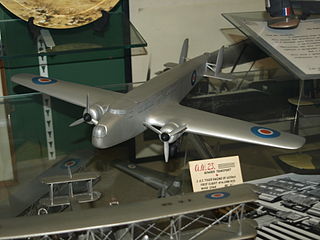 W
WThe Armstrong Whitworth A.W.23 was a prototype bomber/transport aircraft produced to specification C.26/31 for the British Air Ministry by Armstrong Whitworth Aircraft. While it was not selected to meet this specification, it did form the basis of the later Armstrong Whitworth Whitley aircraft.
 W
WThe Avro Vulcan is a jet-powered tailless delta wing high-altitude strategic bomber, which was operated by the Royal Air Force (RAF) from 1956 until 1984. Aircraft manufacturer A.V. Roe and Company (Avro) designed the Vulcan in response to Specification B.35/46. Of the three V bombers produced, the Vulcan was considered the most technically advanced and hence the riskiest option. Several reduced-scale aircraft, designated Avro 707, were produced to test and refine the delta wing design principles.
 W
WThe Blackburn Buccaneer is a British carrier-capable attack aircraft designed in the 1950s for the Royal Navy (RN). Designed and initially produced by Blackburn Aircraft at Brough, it was later officially known as the Hawker Siddeley Buccaneer when Blackburn became a part of the Hawker Siddeley Group, but this name is rarely used.
 W
WThe Boeing B-50 Superfortress is an American strategic bomber. A post–World War II revision of the Boeing B-29 Superfortress, it was fitted with more powerful Pratt & Whitney R-4360 radial engines, stronger structure, a taller tail fin, and other improvements. It was the last piston-engined bomber built by Boeing for the United States Air Force, and was further refined into Boeing's final such design, the B-54. Not as well known as its direct predecessor, the B-50 was in USAF service for nearly 20 years.
 W
WThe Boeing KB-29 was a modified Boeing B-29 Superfortress for air refueling needs by the USAF. Two primary versions were developed and produced: KB-29M and KB-29P.
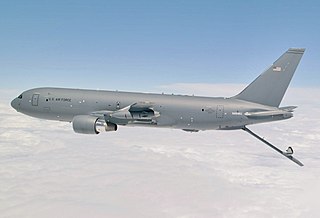 W
WThe Boeing KC-46 Pegasus is an American military aerial refueling and strategic military transport aircraft developed by Boeing from its 767 jet airliner. In February 2011, the tanker was selected by the United States Air Force (USAF) as the winner in the KC-X tanker competition to replace older Boeing KC-135 Stratotankers. The first aircraft was delivered to the Air Force in January 2019. The Air Force intends to procure 179 Pegasus aircraft by 2027.
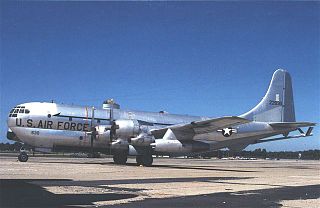 W
WThe Boeing KC-97 Stratofreighter is a United States strategic tanker aircraft based on the Boeing C-97 Stratofreighter. It was succeeded by the Boeing KC-135 Stratotanker.
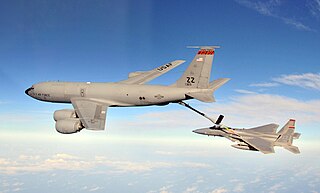 W
WThe Boeing KC-135 Stratotanker is a military aerial refueling aircraft that was developed from the Boeing 367-80 prototype, alongside the Boeing 707 airliner. It is the predominant variant of the C-135 Stratolifter family of transport aircraft. The KC-135 was the US Air Force's first jet-powered refueling tanker and replaced the KC-97 Stratofreighter. The KC-135 was initially tasked with refueling strategic bombers, but it was used extensively in the Vietnam War and later conflicts such as Operation Desert Storm to extend the range and endurance of US tactical fighters and bombers.
 W
WThe Airbus CC-150 Polaris is the designation for the civilian Airbus A310-300s which have been converted into multi-purpose, long-range jet aircraft for passenger, freight or medical transport and mid-air refueler for the Royal Canadian Air Force.
 W
WThe Grumman A-6 Intruder is an American twinjet all-weather attack aircraft developed and manufactured by American aircraft company Grumman Aerospace that was operated by the U.S. Navy.
 W
WThe Handley Page W.8, W.9 and W.10 were British two- and three-engine medium-range biplane airliners designed and built by Handley Page.
 W
WThe Handley Page Victor is a British jet-powered strategic bomber which was developed and produced by Handley Page, and which served during the Cold War. It was the third and final V bomber to be operated by the Royal Air Force (RAF), the other two being the Avro Vulcan and the Vickers Valiant. The Victor had been developed as part of the United Kingdom's airborne nuclear deterrent. It was retired from the nuclear mission in 1968, following the discovery of fatigue cracks which had been exacerbated by the RAF's adoption of a low-altitude flight profile to avoid interception.
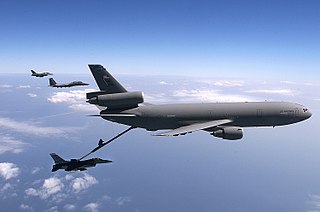 W
WThe McDonnell Douglas KC-10 Extender is an American aerial refueling tanker aircraft operated by the United States Air Force (USAF). A military version of the three-engined DC-10 airliner, the KC-10 was developed from the Advanced Tanker Cargo Aircraft Program. It incorporates military-specific equipment for its primary roles of transport and aerial refueling. It was developed to supplement the KC-135 Stratotanker following experiences in Southeast Asia and the Middle East. The KC-10 was the second McDonnell Douglas transport aircraft to be selected by the Air Force following the C-9. A total of 60 KC-10s were produced for the USAF. The Royal Netherlands Air Force operates two similar tankers designated KDC-10 that were converted from DC-10s.
 W
WKQ-X was a $33 million DARPA program awarded to Northrop Grumman on July 1, 2010. KQ-X investigated and developed autonomous aerial refueling techniques using two NASA Global Hawk high-altitude long endurance (HALE) unmanned aerial vehicles (UAVs).
 W
WThe Lockheed HC-130 is an extended-range, search and rescue (SAR)/combat search and rescue (CSAR) version of the C-130 Hercules military transport aircraft, with two different versions operated by two separate services in the U.S. armed forces.
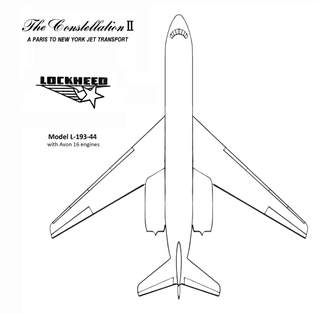 W
WThe Lockheed L-193 Constellation II was a jet airliner design concept, designed between 1949 and 1953 with a swept wing and engines mounted at the tail. An airliner and tanker version were developed. The latter, in an aerial refueling competition initiated by the United States Air Force (USAF), won and was preferred over the Boeing KC-135 Stratotanker. Since the competing Boeing aircraft was ready to fly first, examples were ordered as an interim measure. They performed well enough that the L-193 was never ordered as a tanker, and airliner plans were dropped soon after.
 W
WThe Lockheed Martin KC-130 is a family of the extended-range tanker version of the C-130 Hercules transport aircraft modified for aerial refueling. The KC-130J is the latest variant operated by the United States Marine Corps (USMC), with 48 delivered out of 79 ordered. It replaced older KC-130F, KC-130R, and KC-130T variants, while one USMC reserve unit still operates 12 KC-130T aircraft.
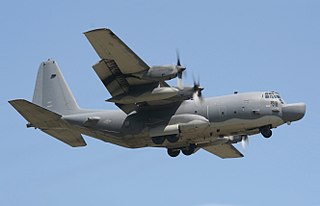 W
WThe Lockheed MC-130 is the basic designation for a family of special mission aircraft operated by the United States Air Force Special Operations Command (AFSOC), a wing of the Air Education and Training Command, and an AFSOC-gained wing of the Air Force Reserve Command. Based on the Lockheed C-130 Hercules transport, the MC-130s' missions are the infiltration, exfiltration, and resupply of special operations forces, and the air refueling of (primarily) special operations helicopter and tilt-rotor aircraft.
 W
WThe Lockheed TriStar is an air-to-air tanker and transport aircraft formerly in service with the Royal Air Force (RAF). All are converted civilian Lockheed L-1011-500 TriStar airliners—previously operated by British Airways and Pan American World Airways—and entered service with the RAF in 1984.
 W
WJSC Research & Development Production Enterprise Zvezda, or R&D PE Zvezda is a Russian manufacturer of life-support systems for high-altitude flight and human spaceflight. Its products include space suits, ejector seats, aircraft escape slides, lifejackets and fire extinguishers. It is based in Tomilino, near Moscow.
 W
WOmega Air Refueling is a company that provides aerial refueling services for military customers. According to the company's website, Omega developed the first commercial aerial refueling aircraft in 1999, and has provided aerial refueling services under contract to the United States Navy since 2001. The company has also been engaged to support Royal Australian Air Force training exercises due to delays in delivery of KC-30A tankers. In addition, Omega Air Refueling states it has been contracted to support deployments by the Royal Air Force and the Royal Canadian Air Force.
 W
WRotors running refuelling is the act of refuelling a helicopter, while the helicopter keeps rotors running. Unlike Helicopter in-flight refuelling, RRR can only be performed on ships or helipads, which can support the given helicopter.
 W
WThe Xian H-6 is a licence-built version of the Soviet Tupolev Tu-16 twin-engine jet bomber, built for China's People's Liberation Army Air Force (PLAAF).